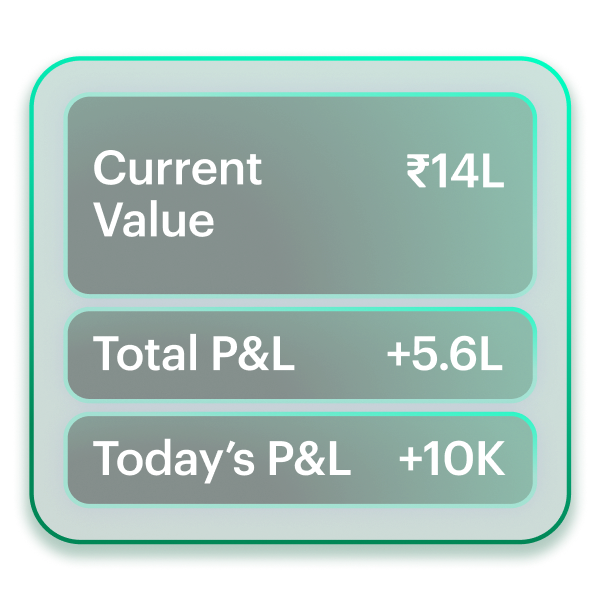Last Updated on Nov 23, 2022 by Anshiya Tabassum
An average individual spends as high as Rs. 66-68 lakh to raise a child from birth till 21 yrs of age. The majority of the amount is dedicated to school and higher education. Now the important question here is how do you plan and reach this amount?
It is impossible for a middle-income to the upper-middle-income individual to reach the desired amount through the regular monthly cash inflow (read salary income). Thus, you need a plan B that works even when you are not working. The answer is simple. You need to invest and chase the corpus for your child’s higher education.
In this article, we will specifically discuss how you can save money for your child’s higher education using goal-based investment planning.
Components of a goal-based model
- Defining a goal and setting the goal amount – You need to know what you are saving up for, what is today’s cost, and what will be the future cost of education. EduFund provides you with the education cost calculator to calculate the cost of your child’s higher education along with the living cost and other expenses.
- Don’t forget about the additional cost – When your child enters high school, there are additional costs other than school fees or tuition fees. If you are planning to send your child abroad, plan for the currency depreciation also. Let us see an example –
| Unit | Oct-2004 | Oct-2022 | |
| Tuition | $ | 50,000 | 50,000 |
| Living | $ | 25,000 | 25,000 |
| Total | $ | 75,000 | 75,000 |
| 1 USD = | Rs. | 45.33 | 82.77 |
| Total cost | Rs. | 33,99,750 | 62,07,750 |
| Increase | 82% |
In the above table, if you look at the tuition cost and living cost in the US – there is no change. But merely due to currency depreciation, the cost of living, tuition, and overall education for an Indian parent increased by approximately 82% in 18 yrs. If you look at purely sector-wise inflation between 2012-2020:
- Food- 9.62%
- Healthcare- 8%
- Education- 10%
The above data brings forth the stark reality of how the rise in education costs has now surpassed food and healthcare in the last decade, and thus the step of defining the goal is very critical.
- Investment horizon – The investment horizon gives you the timeline to be financially ready for the expense.
- Risk appetite – Risk is an outcome of horizon, income, expenses, dependents, and behavior during a volatile market.
- Asset allocation – Since you cannot put all your money in one instrument, you need to have an asset allocation between equity, debt, and gold. Within equity also – you need to allocate funds between large, mid, small, thematic, and sectoral funds.
- Investment selection – Once you have a portfolio allocation in place, the next step is to pick the funds from the available universe for each asset class/category.
- Rebalancing – Markets are bound to be volatile. Thus, while setting the goal, you need to periodically exit investments and re-allocate funds. A goal-based investment plan is successful only if you have a proper exit strategy.
- Wealth creation: This occupies the majority of the time for achieving the goal. Here, the risk appetite is high, duration is high, and growth is high. During this period, you have a high allocation to equity – particularly the mid and the small-cap space.
- Wealth protection: Final stage of your goal. Here the objective is to protect the capital. For this phase, the duration is small, growth is low, the risk is low, and thus you allocate funds to the debt asset class.
For example, if your investment horizon is 15 yrs, the below table shows how the risk in the portfolio has been reduced:
| Investment Period | Risk | Phase |
| 0 – 11 Years | High | Wealth Creation |
| 12th Year | Above Average | |
| 13th Year | Average | Wealth Protection |
| 14th Year | Below Average | |
| 15th Year | Low |
Let us see an example –
| Target Amount | Rs. 1,00,00,000 |
| Horizon | 15 yrs |
| Risk | High |
| SIP | Rs. 17,018 |
| Actual Wealth Accumulated | Rs. 1,00,00,153 |
| Portfolio XIRR | 14.57% |
To achieve the above goal, you must ensure your portfolio is rebalanced at different stages (see chart below). If you look at the period of 2020 (COVID period), the market corrected significantly, and investors who follow a disciplined approach to investing would have rebalanced their portfolio on the basis of risk. This would have helped in balancing the growth in corpus and also protecting the capital while reaching their goal.
Note: The period understudy is between January 2007 – December 2021. The left-hand side is Investment Value and the right-hand side is BSE Sensex Value.
Source: BSE Sensex
When you do goal-based investing, the idea is to achieve the goal with optimized risk instead of getting derailed from your goal. Towards the penultimate years of your goal, your focus should be capital preservation. Because in goal planning, you have pre-defined events such as education and retirement, which cannot be delayed; thus, the availability of capital is critical when the goal hits.
Conclusion
Education inflation is rising at double the rate of normal inflation. And it can be a major concern for almost every parent who desires to provide quality education to their child. The above-discussed steps may help you plan your financial journey in a simple way and could make your saving journey effortless and affordable.
- How Can I Save for My Child’s Higher Education? - Nov 23, 2022



